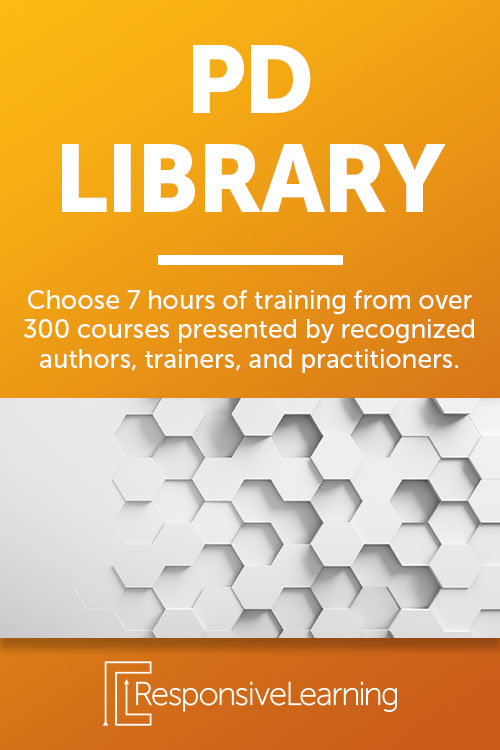Have you ever wondered how you can inspire creative writing in your students? Today is your lucky day! We asked a few questions and received invaluable insight on all things concerning creative writing from our acclaimed content partner, Shannon Anderson.
Shannon has taught for 25 years, from first grade through college level students. She has served as the gifted coordinator for her school corporation, as well as a writing coach. The highlight of her teaching career was being named one of the Top 10 Teachers to inspire the Today Show. Shannon is also an award-winning children’s book author, and she loves to do author visits while mentoring aspiring writers.
What are some of your favorite creative writing exercises to get students thinking?

Oh, there are so many! I share a lot of them in my course: Creativity Disclaimer – Your Kids May Fall in Love with Writing! Some of my favorite exercises involve using figurative language devices and poetry. Any time kids can play around with words, it tends to get their creative juices flowing.
How do you recommend inspiring a student who doesn’t enjoy writing?
JK Rowling said, “If you don’t like to read, you haven’t found the right book.” I feel the same way about writing. If a child doesn’t like to write, it may be that they haven’t had the opportunity to write something fun or meaningful. There are many forms of writing – from stories to poetry. When kids see that all writing isn’t a written response to questions and reports, they usually change their minds.
What was your relationship with writing like as a student?
As soon as I learned how to write, I was filling out diaries and journals. It wasn’t until 5th grade, when I won a school-wide writing contest, that I ever thought of my writing as something for someone else to appreciate. Before, I had just done it as a way to express my feelings and record my thoughts. Once I realized writing can be enjoyed by others, I became more intentional in the way I chose my words. I loved finding fun and unique ways to share stories and ideas.
How is writing different from other creative or academic endeavors?
In math and science, there are concrete formulas and ways to solve problems. It is more black and white. In writing, there is no right or wrong answer or process. It’s more “colorful.” Writing can be approached in different forms and expressed in all kinds of ways. This can be exciting for some kids to experience the freedom of word choices and techniques. Some students want a concrete way to do something and can get frustrated when it isn’t clear-cut.
What is creative writing, and how is it different from other forms of writing kids experience in school?

If other forms of writing are done well, there are some creative aspects to it, but that is a talk for a different day! Creative writing is a form of artistic expression. It may use wordplay or a clever delivery. It tends to evoke feelings and involve more of the senses. Sometimes it is created for the creator and sometimes it is meant for an audience. Content writing many times has the purpose to inform or teach about something.
What are some of your favorite tools to help foster creativity in writing?
My favorite tool is using mentor texts. I find books that are similar in genre or topic to the type of writing I’m working on and devour them. I also love to use online tools like a thesaurus or rhyming websites if I’m working on poetry.
How can teachers model creative thinking for their students?

Share your writing with your students! I love sharing a new story or poem I’m working on to get their feedback. You can also show them your journals or idea books to inspire kids to start using them.
Most importantly though, when you are sharing a new skill or craft technique, it is good for you to model an example and talk through your thinking process aloud as you demonstrate. Use excitement as you brainstorm and figure out your wording. Students will see how fun writing can be and also understand what to do when they see you model in this way.
How do you incorporate having a growth mindset into writing?
I always share a picture of my rejection (no-thank-you) letters with students at my author visits. I want them to see that writing can be hard. However, if we seek feedback, we can use that to help us get better.
I read my rejection letters to glean anything that may help me to make my story stronger. That allows me to revise based on an expert’s advice and improve my writing. It’s just like playing a sport. When you practice a lot and keep listening to feedback from a coach and others, you get better. The more we try things, the stronger our neural pathways become.
If you’re interested in learning more about Shannon Anderson, you can explore her website and sign up for monthly resources.
Seeking creative writing inspiration? Check out the demo for Shannon’s course: Creativity Disclaimer – Your Kids May Fall in Love with Writing!


